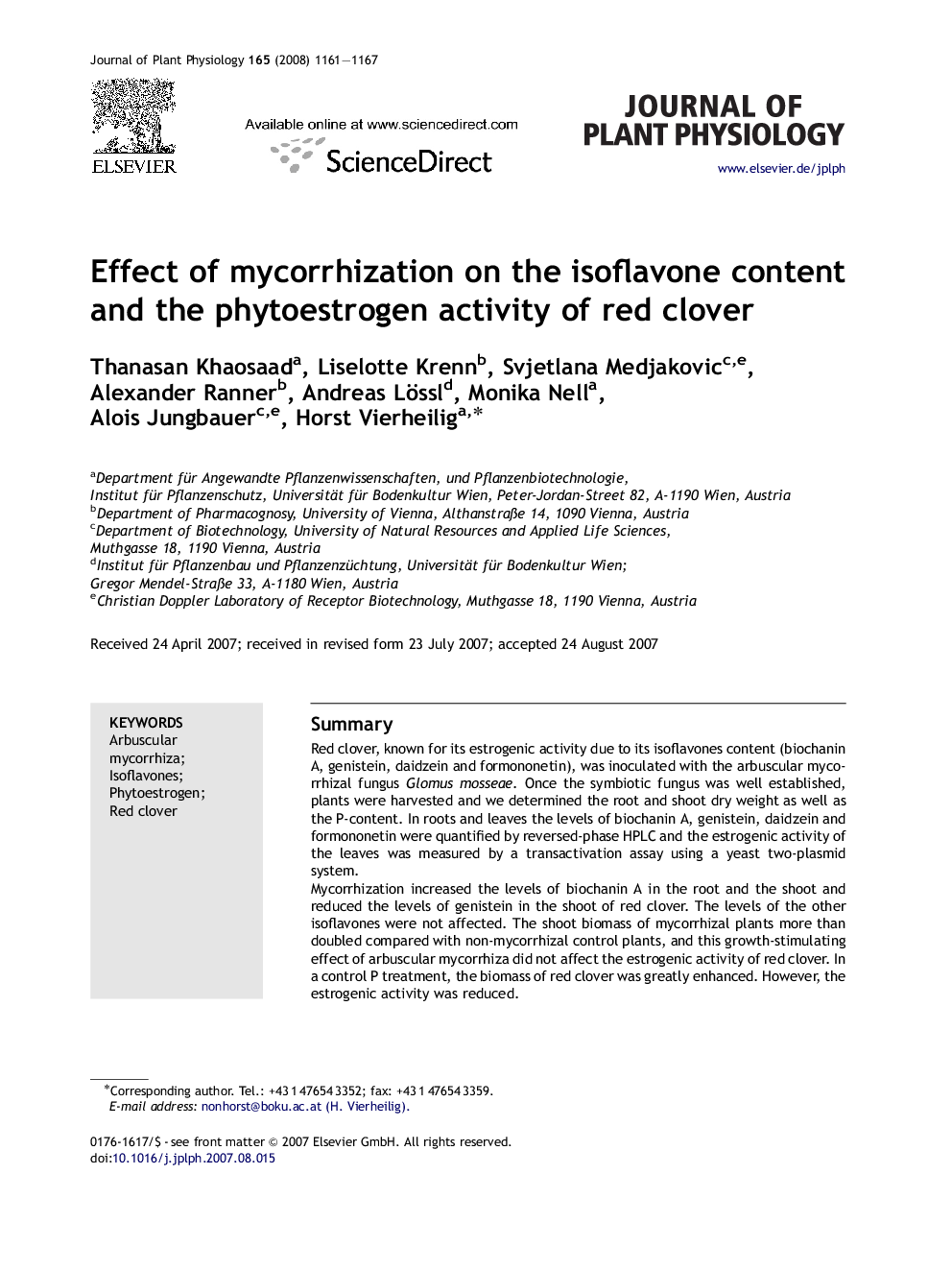| Article ID | Journal | Published Year | Pages | File Type |
|---|---|---|---|---|
| 2057101 | Journal of Plant Physiology | 2008 | 7 Pages |
SummaryRed clover, known for its estrogenic activity due to its isoflavones content (biochanin A, genistein, daidzein and formononetin), was inoculated with the arbuscular mycorrhizal fungus Glomus mosseae. Once the symbiotic fungus was well established, plants were harvested and we determined the root and shoot dry weight as well as the P-content. In roots and leaves the levels of biochanin A, genistein, daidzein and formononetin were quantified by reversed-phase HPLC and the estrogenic activity of the leaves was measured by a transactivation assay using a yeast two-plasmid system.Mycorrhization increased the levels of biochanin A in the root and the shoot and reduced the levels of genistein in the shoot of red clover. The levels of the other isoflavones were not affected. The shoot biomass of mycorrhizal plants more than doubled compared with non-mycorrhizal control plants, and this growth-stimulating effect of arbuscular mycorrhiza did not affect the estrogenic activity of red clover. In a control P treatment, the biomass of red clover was greatly enhanced. However, the estrogenic activity was reduced.These results suggest that, in contrast to an enhanced shoot biomass production after P application with a reduced estrogenic activity, with arbuscular mycorrhiza the shoot biomass of red clover can be enhanced without a negative effect on estrogenic activity.
